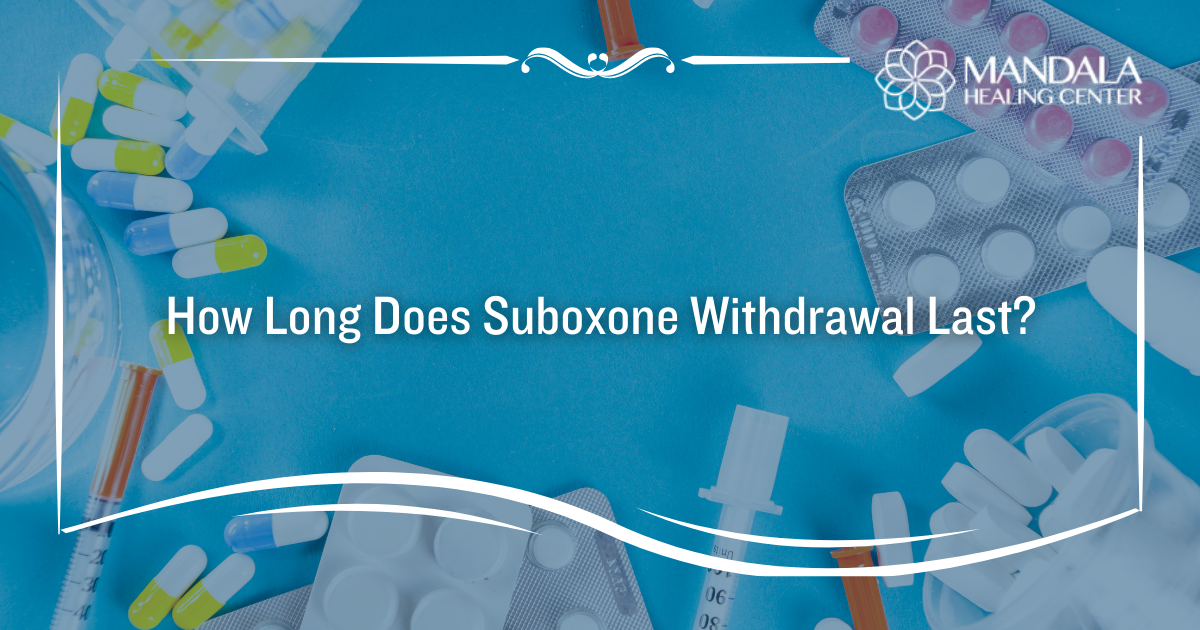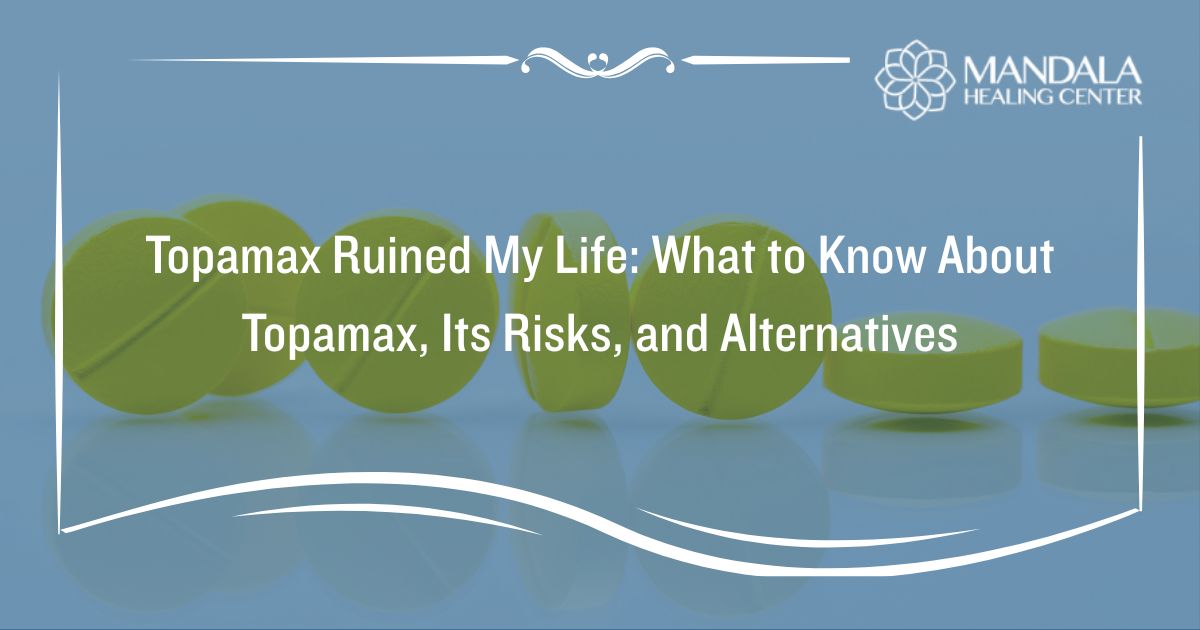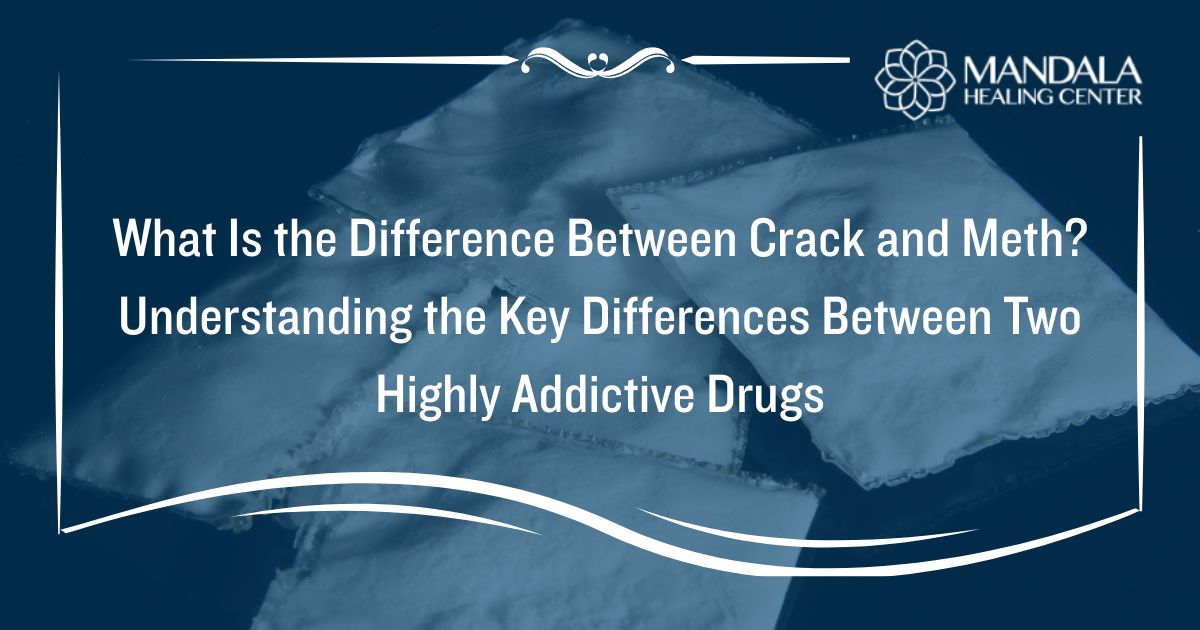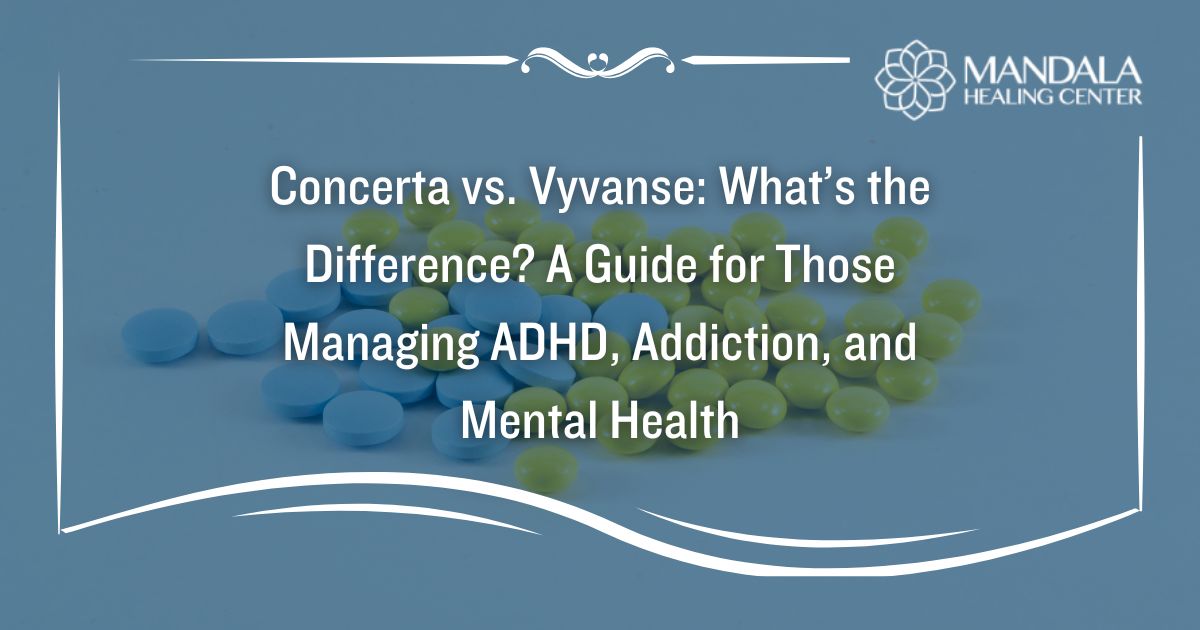Medication-assisted treatment (MAT) is a type of substance abuse treatment that uses medications to combat opioid and alcohol addiction. Certain medications can soothe symptoms of withdrawal, prevent cravings, and lessen a person’s chance of relapsing.
According to the Substance Abuse and Mental Health Services Administration, “The prescribed medication operates to normalize brain chemistry, block the euphoric effects of alcohol and opioids, relieve physiological cravings, and normalize body functions without the negative and euphoric effects of the substance used.”[1]
One of the medications used during MAT to treat opioid addiction is known as Suboxone. Suboxone is a combination medication that contains naloxone and buprenorphine. Buprenorphine is a partial opioid agonist that partially activates opioid receptors and prevents cravings, while naloxone is a full opioid antagonist that blocks the effects of opioids and reduces the risk of relapse.
While Suboxone treatment is highly effective in treating opioid addiction, long-term use of this medication can cause physical dependence resulting in symptoms of withdrawal when you stop taking it. The Suboxone withdrawal timeline varies from one person to the next depending on how long they’ve been taking it, what dose they were taking, and other factors.
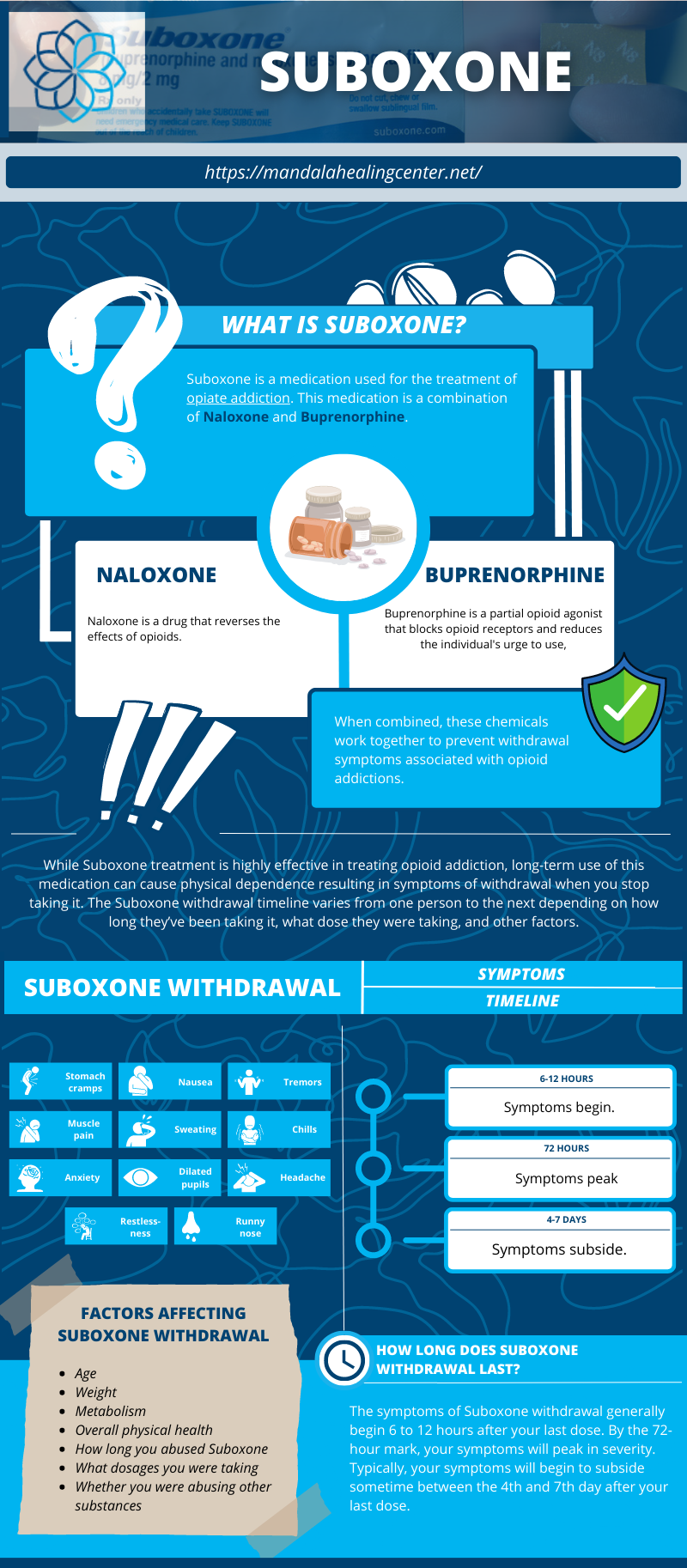
Symptoms of Suboxone Withdrawal
While the buprenorphine in Suboxone does not activate opioid receptors to the same extent as other opioids, it is still physically addictive. Even taking Suboxone as prescribed can result in physical dependence, but so can taking other medications, including antidepressants.
The symptoms of Suboxone withdrawal are typically less intense than other forms of opioid withdrawal. However, it is still important that you receive support from a medical detox program or taper off Suboxone slowly under your doctor’s guidance.
The symptoms of Suboxone withdrawal may include:[2]
- Stomach cramps or diarrhea
- Nausea or vomiting
- Tremors or twitching
- Muscles aches and pains
- Sweating
- Chills
- Anxiety
- Dilated pupils
- Headache
- Restlessness
- Runny nose
How Long Does Suboxone Withdrawal Last?
The symptoms of Suboxone withdrawal generally begin 6 to 12 hours after your last dose. By the 72-hour mark, your symptoms will peak in severity. Typically, your symptoms will begin to subside sometime between the 4th and 7th day after your last dose.
It is important to note that Suboxone withdrawal is different for everyone. While one individual may complete the withdrawal process after 4 days, someone else may experience symptoms for more than a week. This is because the withdrawal timeline heavily depends on a variety of personal factors.
Factors that influence how long Suboxone withdrawal lasts include:
- Age
- Weight
- Metabolism
- Overall physical health
- How long you abused Suboxone
- What dosages you were taking
- Whether you were abusing other substances
Suboxone Withdrawal Timeline
The timeline of Suboxone withdrawal depends heavily on a variety of personal factors. This means that predicting the exact timeline is nearly impossible. However, there is a general timeline that most individuals loosely follow.
Generally, withdrawal symptoms will begin 6 to 12 hours after your last dose. Early symptoms are usually mild and include anxiety, fatigue, and discomfort. After 72 hours, your symptoms will begin to peak in severity causing you to experience fever, body aches, nausea, vomiting, and diarrhea.
After 4 days have passed, the physical symptoms of Suboxone withdrawal may begin to subside. Most individuals stop experiencing physical symptoms like body aches, fever, and vomiting by 7 days. However, you may begin to experience the psychological symptoms of Suboxone withdrawal.
Between 2 to 4 weeks after your last dose, you are at an increased risk of experiencing symptoms of depression, anxiety, and cravings for opioids.[2] These psychological symptoms may last over a month, making it vital that you are under the care of a drug and alcohol rehab program.
Suboxone Withdrawal Prevention & Coping
The main way that Suboxone withdrawal is treated is through the tapering process. When you go to a drug detox program for Suboxone dependency, they will use the tapering method to help your body gradually adjust to lower doses of the medication over time. By gradually reducing your dose each day, you can avoid experiencing symptoms of withdrawal and severe cravings.
How quickly you taper off of Suboxone will depend on your personal needs. Some people can taper off of the medication quickly, while others may need up to 45 days to be completely tapered off of the drug. The medical staff at your detox center will work with you to determine your tapering schedule and treatment plan.
In addition to tapering, there are natural ways to cope with the symptoms of Suboxone withdrawal. If you are participating in a tapering program, you may experience mild symptoms of withdrawal when your dosage is lowered. Using healthy coping mechanisms can help you overcome the lingering symptoms of Suboxone withdrawal.
Examples of healthy coping mechanisms to use during detox include:
- Eating a healthy diet
- Exercising regularly
- Staying hydrated
- Meditation and mindfulness techniques
- Breathing exercises
- Yoga
- Engaging in sober-friendly activities
- Attending individual therapy and group counseling
- Participating in addiction recovery meetings
Get Started at a Medical Detox Center in West Palm Beach, FL
Our board-certified physicians and world-class clinical team are ready to help patients struggling with a wide variety of substances, including opiates, methamphetamine, benzodiazepine, and illicit substances.
The Mandala Healing Center understands that addiction presents differently with each patient, as each substance affects individuals in unique ways. After a careful assessment of each patient’s history and patterns of drug use, a personalized detoxification plan is developed. After the physical addiction is treated, healing can then begin.
Please contact us today if you or a loved one are ready to begin your recovery journey.
References:


